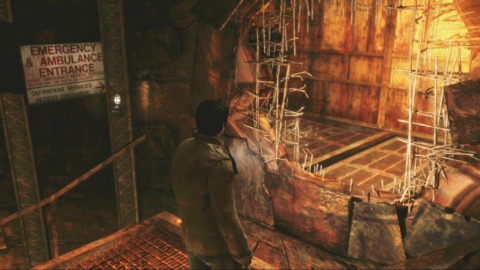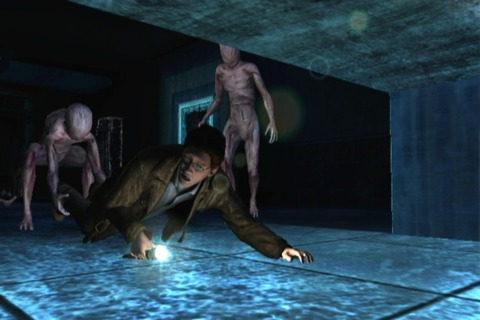Lessons From Silent Hill
With Silent Hill: Downpour on the horizon, here are a few lessons we hope developer Vatra Games learned from the series' past.

Silent Hill is a strange series. Since their initial release in 1999, the games have always felt a bit awkward. They had clunky combat, flat voice acting, and numerous other quirks, but despite all of this, they still managed to capture the curiosity of players across the globe. Something about the Silent Hill games was just so alien that it was hard not to be intrigued. Understanding and recapturing that magic is a tall order, but there are plenty of lessons that previous games can teach Vatra Games, the developer behind Silent Hill: Downpour. What the developer has shown looks promising; we just hope it keeps these examples in mind.
Silent Hill 2 Remake Devs Open Up about the Game's Reception NINJA GAIDEN: Ragebound - Official Kumori Gameplay Reveal Trailer ARC Raiders | Tech Test 2 Announcement Trailer ELDEN RING NIGHTREIGN | Raider Character Gameplay Trailer LOLLIPOP CHAINSAW RePOP - Nightmare Mode Gameplay Reveal Trailer Palia's NEW Elderwood Update - 30 Minutes of Gameplay Warhammer 40k: Space Marine 2 Trygon Update Overview Trailer Zenless Zone Zero - Season 2 Preview Trailer | "Through the Miasma of Memories and Evil" Baldur’s Gate 3: The Final Patch - An Animated Short MARVEL vs. CAPCOM Fighting Collection: Arcade Classics - Title Update Overview Trailer Skull and Bones: Year 2 Update Announcements Trailer Capcom Fighting Collection 2 - Power Stone and Street Fighter Alpha 3 Upper Game Spotlight Trailer
Please enter your date of birth to view this video
By clicking 'enter', you agree to GameSpot's
Terms of Use and Privacy Policy
Silent Hill
The first Silent Hill was all about the town. The game did an excellent job of creating an environment of hostility and terror. It also didn't smack you over the head with its scares; instead, it nurtured a sense of foreboding through its presentation. A great example of this took place with the first otherworld transition sequence. Up to that point, your character, Harry, had been jogging through the fog-choked streets of Silent Hill looking for his daughter. Then, he turned down the wrong alleyway, and the whole thing went to hell.
This sequence made excellent use of framing and sound to craft a great introduction to Silent Hill.Everything was the opposite of what had come before. The alleyway was narrow and claustrophobic. The traditional, third-person camera angle gave way to more disorienting fixed-camera shots. Music--a heavy, industrial thumping--swelled up from the background to join the iconic wail of an air-raid siren. Layered together, these elements stretched the player's nerves to the edge. Then, Harry was attacked--and killed. All of that buildup paid off in a moment of helplessness. This outstanding sequence made excellent use of the medium's fundamentals to craft a powerful introduction to Silent Hill.
Silent Hill 2
The story of Silent Hill 2 stuck in the minds of players long after the game was released, and that was for good reason. While the first game told a mysterious tale of cults and demons, the second grounded its narrative in something we could relate to: the characters. It focused on James--his guilt, desperation, and conflicting emotions with love-interest Maria. We witnessed his torment and became invested as he struggled to overcome this nightmare. The game also elegantly wove the town of Silent Hill into the plot and used it as a medium that manifested James' guilt in the form of horrific monsters, as well as one iconic villain. Silent Hill 2 was a gripping story of human emotion pushed to its limits, and it endures as a prime example of narrative-driven gaming.
Silent Hill: Homecoming
Silent Hill: Homecoming featured well-crafted stages that broke from the series' tradition. Typically, players explored long hallways inside of hospitals, hotels, and the occasional sewer. Locked doors and broken locks were the true villains of these haunted houses. And while Homecoming was no exception, it had some new locations unlike anything seen before. Hell Descent was a great example. This stage presented an ongoing downward spiral that went into a tower of fire and rusted metal. The player was always climbing down, with the only locked doors being those labeled "Exit." It was a literal descent into madness. Hell Descent retained all of the monsters and puzzles players expected within a setting that offered a refreshing change of pace.
Silent Hill: Shattered Memories
Things were different in Silent Hill: Shattered Memories. This divisive game took a lot of chances by redesigning the look and feel of Silent Hill. In particular, Shattered Memories did an excellent job of getting in your head. The ongoing psychological exam, and its influence on the game's world, let you inject a bit of personality into the story. This was something rarely seen outside of the role-playing genre. The chase sequences forwent the game's clunky combat for a mixture of action and terror. Of course, sometimes this terror gave way to frustration after multiple failures--but at least it was something different.
These are just some examples of what makes Silent Hill stand out. The series has always provided a horror experience that's difficult to find elsewhere in video games. Other series are fine with swapping scares for action, but the Silent Hill games endure with a slow, creeping sense of dread. When done well, these genuine moments of terror persist long after the pomp and circumstance of other games have faded. Executing on this takes a special talent, and with any luck, the team at Vatra can put its own, unique stamp on the series.
Got a news tip or want to contact us directly? Email news@gamespot.com


Join the conversation